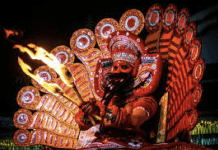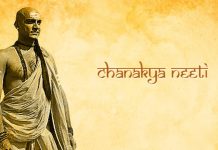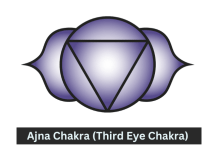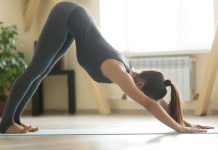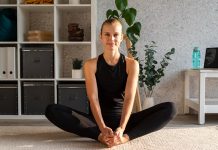
In the vast world of yoga, where each pose represents a unique fusion of physical prowess and spiritual alignment, Chaturanga Dandasana, also known as Four-Limbed Staff Pose, stands as a formidable bridge between various asanas. Often considered a cornerstone in Vinyasa and Ashtanga yoga practices, this pose marries strength and alignment in a profound way. In this exploration, we delve into the essence of Chaturanga Dandasana, its practice, benefits, and tips for mastering this powerful pose.
The Essence of Chaturanga Dandasana:
Derived from Sanskrit, “Chatur” means “four,” “Anga” means “limb,” and “Danda” translates to “staff” or “rod.” Together, Chaturanga Dandasana signifies a pose in which the body is held parallel to the ground, resembling a staff or rod, supported by four points: the toes and the palms.
The Practice:
Entering Chaturanga Dandasana involves these steps:
1. From Plank Position: Begin in a high plank position with your wrists aligned under your shoulders, fingers spread wide, and your body forming a straight line from head to heels.
2. Engage Your Core: Draw your navel toward your spine and engage your core muscles. This will help stabilize your body as you lower down.
3. Shift Forward: Shift your weight forward onto the balls of your feet as you bend your elbows. Your upper arms should be parallel to the ground, creating a 90-degree angle at your elbows.
4. Lower with Control: As you lower your body toward the ground, ensure that your elbows remain close to your ribcage. This control is crucial for building strength and preventing strain.
5. Straight Body Line: Aim to maintain a straight line from your head to your heels. Avoid sagging your hips or allowing your shoulders to hunch.
6. Hovering Position: Ideally, your body should hover just above the ground, parallel to it, without touching. However, beginners can modify by gently resting their knees, chest, and chin on the mat.
7. Chin and Gaze: Keep your chin tucked slightly toward your chest to maintain a neutral neck position. Gaze slightly forward.
8. Breathing: Maintain steady, controlled breaths throughout the pose. Exhale as you lower down and inhale as you push back up.
9. Transition: From Chaturanga, you can transition into Upward-Facing Dog (Urdhva Mukha Svanasana) or Cobra Pose (Bhujangasana) as part of a Vinyasa flow.
Benefits of Chaturanga Dandasana:
1. Upper Body Strength: Chaturanga Dandasana is a potent upper body strengthener, particularly targeting the triceps, shoulders, and chest.
2. Core Stability: Engaging the core muscles is vital for maintaining alignment in this pose, making it an effective core exercise.
3. Alignment Awareness: Practicing Chaturanga cultivates awareness of proper alignment, which can benefit various yoga poses.
4. Transition Prowess: It is a key component of the Vinyasa flow, teaching smooth transitions between poses.
5. Mind-Body Connection: This pose requires mental focus and mind-body coordination, enhancing concentration.
Tips for Mastery:
1. Modify When Needed: If you’re new to Chaturanga, use the modification of gently resting your knees, chest, and chin on the mat until you build sufficient strength.
2. Practice Regularly: Consistent practice is key to mastering Chaturanga. Incorporate it into your yoga routine with proper form to see improvement.
3. Engage the Core: Keep your core engaged throughout the pose to protect your lower back and maintain proper alignment.
4. Elbow Alignment: Focus on keeping your elbows close to your body as you lower down to prevent strain on the shoulders.
5. Use Props: Placing yoga blocks under your chest can help you build strength gradually while maintaining proper alignment.
In conclusion, Chaturanga Dandasana is more than just a yoga pose; it’s a testament to the union of strength and alignment. As you practice this asana, remember that mastery takes time, and it’s about progress, not perfection. With dedication, awareness, and consistent effort, Chaturanga can become a powerful cornerstone in your yoga practice, connecting your physical strength with the deeper aspects of yoga.








